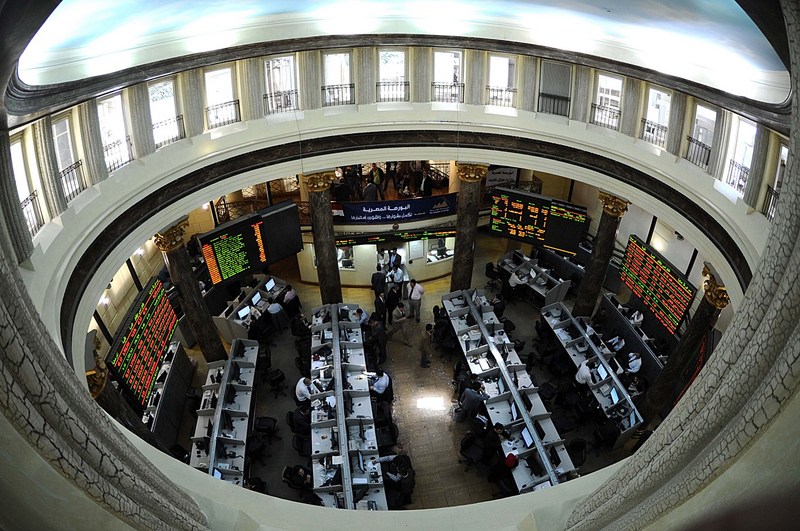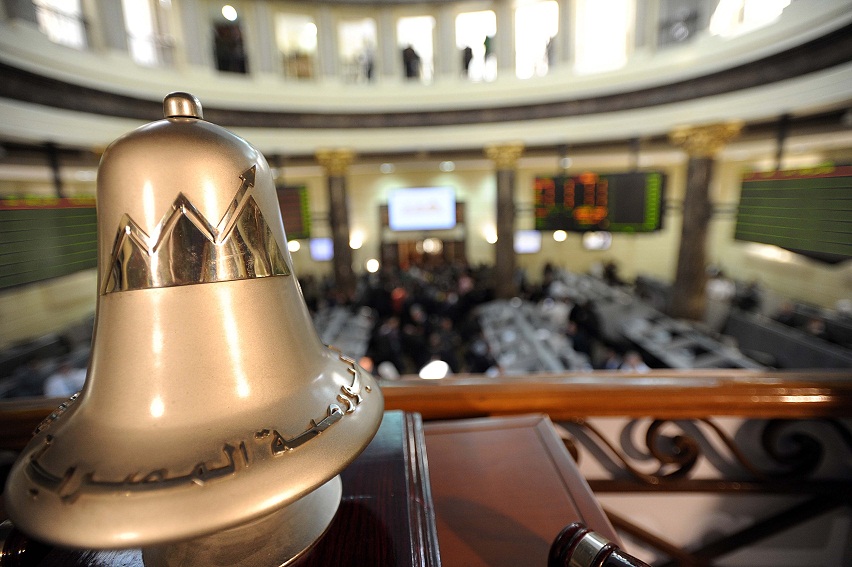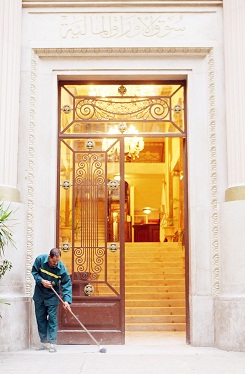“Just memories”. Two words that summed up the opinion of founders of investment banks throughout the history of the Egyptian stock market on the current role of the Egyptian Exchange (EGX) and its attempt to fund the country’s targeted economic growth of 5.2% during the fiscal year 2016/2017.
These experts confirmed that the EGX lost its developmental role over the past few years under the weight of sharp fluctuations in the political, economic, and security situations of the country. The EGX has been able to attract only a very few number of initial public offerings (IPOs) and capital increase that do not fit the size of an economy with a GDP of nearly EGP 3tn.
They said the Egyptian market peaked in 2008, adding that, for it to recover, the entire economy of Egypt must change. This should be followed by other steps, including solving the US dollar shortage and unifying its price on the market to allow easy entry and exit of foreigners. Even then, regaining investors’ trust in Egypt would take a long time should the state convince them of the sustainability of the solutions it pens to solve these problems.
Aly El-Tahry, managing partner and co-founder of Catalyst Partners and co-founder of EFG-Hermes and Beltone, said that the EGX enjoys the fundamental basics to lead economic growth. He noted that the EGX already proved that back when more transactions were taking place and foreign investors were coming to the country. This role, however, has been declining due to a number of factors.
He explained that the main obstacle hindering the EGX from fulfilling its role is the scarcity of US dollars and challenges facing investors repatriating their sale proceeds abroad, as well as the price gap between the official and the unofficial prices of the dollar, which may lead investors to lose their funds if the local currency is suddenly devalued on the official market.
El-Tahry said that the role of the EGX was greatly affected by the political turmoil in Egypt, which gave rise to economic shocks that pushed away investors’ funds and deprived the EGX of financing opportunities that could have been real if the political scene was quiet and stable.
The EGX has 280 listed companies—a number that El-Tahry says does not reflect the reality of the Egyptian economy, especially as many companies do not see trading.
He said that the IPOs seen on the EGX do not reflect the real volume needed by the market to become an active player in the growth of Egypt’s economy.
He added that the instability experienced by Egypt, as well as the foreign currency shortage, has weakened the ability of the EGX to see more IPOs, explaining that the evaluation of companies will be adversely affected by the lack of IPO coverage. “Only companies with dire needs of liquidity resorted to the EGX,” he noted.
El-Tahry pointed out that for the EGX to restore its role in economic development, political and economic conditions must change first, followed by more amendments that encourage companies to offer shares on the market.
For example, he explained that the state should amend the method of dealing with the evaluation of book profits resulting from the merging of family businesses in the framework of restructuring and offering shares on the EGX to calculate the difference between the evaluations of family companies both prior to the merger and after it has capital gains carrying due taxes.
He pointed out that in reality these profits are not tangible and do not include transactions leading to liquidity, but rather only book profits on budget papers. “This is why family companies avoid offering their shares, so they would not have to pay taxes for profits they did not actually make.”

Co-Founder, Chief Executive Officer, and Chairman, BPE Partners
Managing director of Avaris, Hazem Barakat, agreed, saying that the EGX has not been playing an active role in achieving economic growth, despite being one of the usual tools for securing funding for projects, as well as being a window for investment.
He pointed out that the very low trading volume on the market reflects how the EGX lost its role in financing growth. Current trading stands at EGP 400m per day and is not likely to change soon, according to Barakat.
He explained that the market has been facing several problems that need to be addressed. Following that, it should be reviewed to see the new developments.
Barakat noted that in addition to the political turmoil following 2011, the EGX has also been suffering from the inability of foreign investors to repatriate their sales proceeds in 2012 due to the US dollar shortage.
He pointed out that some investors still have money hanging from before March 2013, especially following the Central Bank of Egypt’s (CBE) pledge to secure dollars for investments starting from March 2013 without addressing any funds injected prior to that date.
Moreover, he said that the crisis worsened with the rampant informal market offering a US dollar price different than that of the official market. This caused foreign portfolios in Egypt to lose their value, while some of them decided to turn the shares into global depositary receipts (GDRs) on the London Stock Exchange.
“The EGX cannot have an active role in financing growth when it needs hard cash,” Barakat stressed.
Moreover, he said that closing the deal with the International Monetary Fund (IMF) for a $12bn loan and allowing the Egyptian pound to float will not stimulate the EGX again. “The EGX will not recover before foreigners can see Egypt’s ability to allow free entry and exit of funds from Egypt.”
He explained that the EGX is facing other problems next to the exchange rate and US dollar scarcity, including foreign institutions delaying their participation in Egyptian IPOs due to lack of trust.
Barakat pointed out that over the last five years the EGX has seen a very few number of IPOs; however, he added that this does not reflect the real appetite of foreigners, as most of the liquidity already existed in Egypt before 2013 and was unable to exit due to the US dollar shortage. This forced foreign investors to employ their money until they were able to leave the market.
Hany Tawfik, director of Egyptian Private Equity Association and co-founder of Hermes, said that the EGX is the last episode in a series of economic reform programmes. He added that the EGX can never have an active role while the budget deficit is widening and the debt is rising.
Moreover, he said that the EGX cannot see the sale of products without knowing the price of transactions amid the fluctuating exchange rate.
Tawfik believes that the contribution of the EGX in securing liquidities through IPOs and capital increases worth $38bn since 30 June 2013 is not large enough to use as proof that the EGX has played an active role. “This number means that average financing stands at EGP 13bn, while the GDP amounts to EGP 3bn, meaning that the EGX contributes only 0.43%.”
Furthermore, Tawfik pointed out that at the same time free circulation for a number of heavyweight companies such as Orascom Construction, Mobinil, and Bisco Misr has been falling.
He explained that the real contribution of the EGX to the national economy can only be indicated through examining the market capitalisation ratio for companies to GDP. This figure does not, in the best-case scenario, exceed 17% when the market capital registers EGP 500bn. Now, it is less than EGP 450bn, which is under 15%, according to Tawfik.
He explained that compared to financial indicators in 2008, the general role of the EGX in the national economy will come out shy, compared to the market capitalisation of the EGX which ranged between EGP 800-900bn on average in 2008. Meanwhile, the GDP recorded EGP 1.042bn in 2008/2009. This means that the market capitalisation ranged between 76.8% and 86.4% of GDP.
He added that at a time when the GDP was recording growth, the size of the EGX was shrinking and lost almost 50% of its value over eight years, considering that the high ratio of the market capitalisation to GDP was close to the ratio in global, active stock markets in developed countries, such as Japan, where the ratio is almost 70%.
He stressed that besides the internal and external disturbances, which reflected on the EGX, the capital market does not offer enough incentives. He added that there are taxes on distributions of corporate profits earned by investors of 5-10%, in addition to a forthcoming 10% tax on capital gains expected in May 2017.




